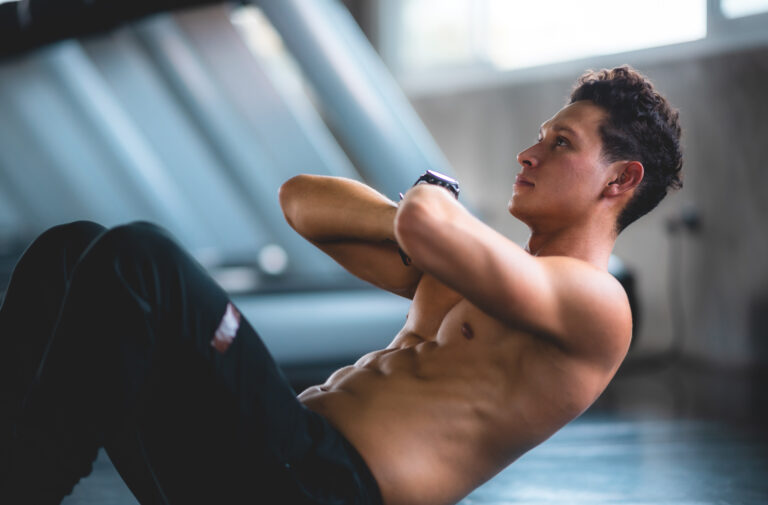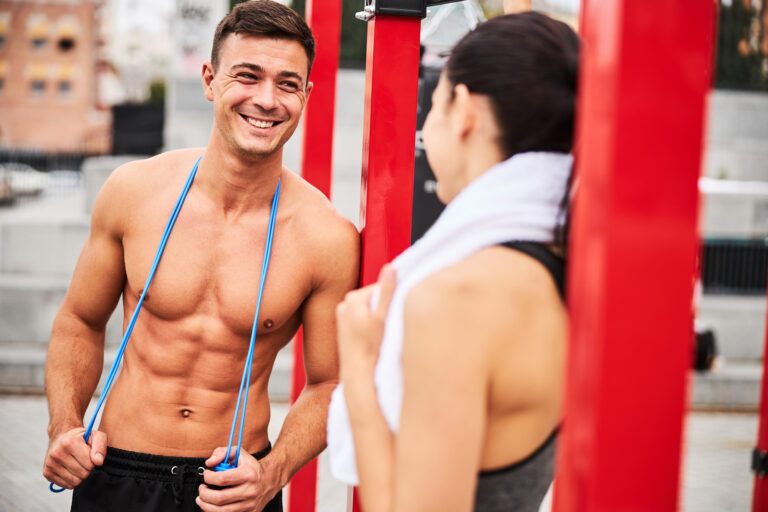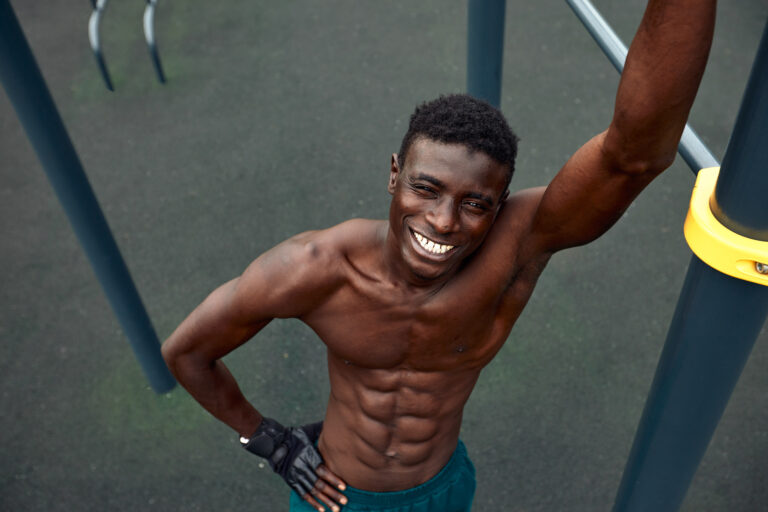What is the External Oblique?
The external oblique is a key muscle in the human body, playing a significant role in various movements and daily activities. This muscle is not only essential for athletes but also for anyone seeking to improve their overall fitness and health. Understanding its anatomy, functionality, and how to properly train it can enhance physical performance and prevent injuries.
Anatomical Description
The external oblique muscle is a crucial part of the abdominal muscle group, located on the sides of the abdomen. It is one of the largest muscles in the abdominal wall, spanning from the lower ribs down to the pelvis. The muscle fibers of the external oblique run diagonally downwards and medially, creating a V-shape.
This muscle originates from the lower eight ribs and inserts into the iliac crest of the pelvis, the pubic tubercle, and the linea alba, a fibrous structure that runs down the midline of the abdomen. The external oblique works closely with the internal oblique muscle, which lies just beneath it, and other muscles of the abdominal wall to provide stability and support.
The external oblique’s strategic location and fiber direction enable it to assist in various movements and functions. It plays a pivotal role in trunk rotation and lateral flexion, making it essential for activities that involve twisting or bending the torso. Its connections to the lower ribs and pelvis also help in stabilizing the spine and supporting the abdominal organs.
Understanding the anatomical intricacies of the external oblique is vital for grasping its importance in movement and stability. This muscle’s extensive network of connections and its relationship with surrounding structures highlight its integral role in maintaining core strength and function.
Functionality and Mechanics
The primary function of the external oblique is to facilitate the rotation and lateral flexion of the trunk. When one side of the external oblique contracts, it causes the torso to twist towards the opposite side. For example, contracting the right external oblique rotates the torso to the left. This action is essential for activities like swinging a bat, throwing a punch, or performing any movement that involves twisting the upper body.
In addition to rotation, the external oblique assists in lateral flexion of the trunk. When both sides of the external oblique contract simultaneously, they contribute to bending the torso sideways. This movement is crucial for activities that require reaching to the side or maintaining balance during lateral movements.
The external oblique also plays a significant role in stabilizing the core and supporting the abdominal contents. It works in conjunction with the internal oblique, rectus abdominis, and transverse abdominis muscles to form a strong, supportive structure around the abdomen. This stability is vital for maintaining proper posture, preventing lower back pain, and protecting the spine during physical activities.
Furthermore, the external oblique is involved in forced expiration, such as during coughing or vigorous exercise. By compressing the abdominal contents, it helps to expel air from the lungs, making it easier to breathe out forcefully. This function is particularly important for athletes engaged in high-intensity sports that require rapid and powerful breathing.
Understanding the biomechanics of the external oblique highlights its versatility and importance in various movements. Its ability to facilitate rotation, lateral flexion, and core stability makes it a crucial muscle for both athletic performance and everyday activities. Proper training and conditioning of the external oblique can enhance overall functional fitness and reduce the risk of injuries.
Physiological Aspects
The external oblique muscle receives its blood supply from several arteries, including the lower intercostal arteries, the subcostal artery, and branches of the superior and inferior epigastric arteries. This rich vascular network ensures that the muscle gets an adequate supply of oxygen and nutrients, which is essential for maintaining its function and endurance during physical activities.
The innervation of the external oblique comes primarily from the lower six thoracoabdominal nerves (T7-T11) and the subcostal nerve (T12). These nerves provide the necessary motor signals that control muscle contraction and movement. Proper neural control is crucial for coordinating the actions of the external oblique with other muscles of the abdominal wall and the core.
The external oblique is composed of a mixture of slow-twitch (Type I) and fast-twitch (Type II) muscle fibers. Slow-twitch fibers are more resistant to fatigue and are well-suited for endurance activities, while fast-twitch fibers are capable of generating rapid and powerful contractions. This combination of fiber types allows the external oblique to perform both sustained and explosive movements effectively.
Training the external oblique requires an understanding of its physiological characteristics. Exercises that involve sustained contractions, such as planks and side planks, help to develop the endurance of the slow-twitch fibers. On the other hand, dynamic movements like Russian twists and medicine ball throws target the fast-twitch fibers, enhancing the muscle’s power and explosiveness.
The muscle’s fiber composition and its neural and vascular connections underscore the importance of a balanced approach to training. Incorporating both endurance and power exercises can optimize the performance and function of the external oblique, contributing to overall core strength and stability.
Role in Fitness and Exercise
The external oblique is a key muscle for anyone looking to improve their fitness, particularly when it comes to core strength and stability. There are numerous exercises that specifically target the external oblique, helping to develop its strength and endurance. Understanding how to properly train this muscle can enhance athletic performance and prevent injuries.
One effective exercise for targeting the external oblique is the side plank. This exercise involves lying on one side and lifting the body off the ground, supported by the forearm and feet. By holding this position, the external oblique on the lower side of the body is engaged to maintain stability. This exercise can be made more challenging by adding leg lifts or rotating the torso.
Another excellent exercise is the Russian twist, which involves sitting on the ground with the knees bent and the torso leaning back slightly. Holding a weight or medicine ball, the individual twists the torso from side to side, engaging the external obliques to control the movement. This exercise is particularly effective for developing rotational strength and stability.
Medicine ball throws are also beneficial for targeting the external oblique. Standing with the feet shoulder-width apart, the individual holds a medicine ball and twists the torso to throw the ball against a wall or to a partner. This explosive movement engages the external oblique to generate power and control the throw.
A strong external oblique contributes to overall athletic performance by enhancing core stability and rotational power. This is particularly important in sports that involve twisting or lateral movements, such as baseball, tennis, and golf. Additionally, a well-developed external oblique can improve balance and coordination, reducing the risk of injuries during physical activities.
It’s important to avoid common mistakes when training the external oblique, such as using improper form or neglecting to balance the training with exercises for other core muscles. Overworking the external oblique without addressing the rest of the core can lead to muscle imbalances and increase the risk of injury. A well-rounded core training program should include exercises that target all the muscles of the abdominal wall, as well as the lower back and hips.
Incorporating a variety of exercises that target the external oblique can enhance core strength, stability, and overall athletic performance. By understanding the role of this muscle in fitness and exercise, individuals can develop a balanced and effective training program that supports their fitness goals.
Health and Medical Considerations
The external oblique, like any other muscle, is susceptible to injuries and strains. Understanding the common issues that can affect this muscle and how to prevent and treat them is essential for maintaining overall health and fitness.
One common injury affecting the external oblique is a muscle strain, which occurs when the muscle fibers are overstretched or torn. This can happen due to sudden, forceful movements, such as twisting or lifting heavy weights. Symptoms of a muscle strain include pain, swelling, and difficulty moving the affected area. Rest, ice, compression, and elevation (RICE) are the first line of treatment for a muscle strain, followed by a gradual return to activity with the guidance of a healthcare professional.
Another issue that can affect the external oblique is a hernia, which occurs when an organ or tissue pushes through a weak spot in the abdominal wall. This can cause a visible bulge, pain, and discomfort, especially when lifting or bending. Hernias often require surgical intervention to repair the weakened area and prevent further complications.
Preventing injuries to the external oblique involves proper warm-up and stretching before engaging in physical activities. Dynamic stretches, such as torso twists and side bends, can help to prepare the muscle for movement and reduce the risk of strains. Additionally, strengthening the entire core, including the rectus abdominis, internal oblique, and transverse abdominis, can provide better support and stability, reducing the risk of injuries.
Overtraining the external oblique can also lead to issues such as muscle imbalances and chronic pain. It’s important to allow adequate rest and recovery between training sessions to prevent overuse injuries. Listening to the body and addressing any pain or discomfort early on can help to prevent more serious injuries and maintain overall health.
In cases of injury, rehabilitation exercises can help to restore strength and function to the external oblique. These exercises should be performed under the guidance of a healthcare professional and should focus on gradually increasing the load and intensity as the muscle heals. Core stabilization exercises, such as planks and pelvic tilts, can be particularly beneficial during the rehabilitation process.
Understanding the common health and medical considerations related to the external oblique is essential for maintaining overall fitness and preventing injuries. By taking a proactive approach to warm-up, stretching, and balanced training, individuals can support the health and function of this important muscle.
Development and Strengthening
Developing and strengthening the external oblique requires a comprehensive approach that includes targeted exercises, proper nutrition, and attention to overall health. Understanding the best practices for training this muscle can enhance core strength and stability.
One of the most effective ways to develop the external oblique is through rotational exercises. These movements engage the muscle fibers in a
way that mimics their natural function, enhancing strength and endurance. Exercises such as Russian twists, medicine ball throws, and cable rotations are excellent choices for targeting the external oblique. It’s important to perform these exercises with proper form and control to maximize their effectiveness and reduce the risk of injury.
In addition to rotational exercises, isometric holds can also be beneficial for developing the external oblique. Side planks and variations, such as adding leg lifts or rotations, engage the muscle in a static position, enhancing its endurance and stability. These exercises can be incorporated into a core training routine to complement dynamic movements and provide a balanced approach to strengthening the external oblique.
Proper nutrition plays a crucial role in muscle development and recovery. Consuming a diet rich in protein, healthy fats, and complex carbohydrates can support muscle growth and repair. Hydration is also essential for maintaining muscle function and preventing cramps or injuries during exercise. Supplements, such as protein powders or amino acids, can be beneficial for individuals with increased protein needs or those looking to enhance their muscle-building efforts.
Maintaining overall health and fitness is important for optimizing the function of the external oblique. Regular cardiovascular exercise, such as running or cycling, can improve overall endurance and support the health of the cardiovascular system. Flexibility training, such as yoga or Pilates, can enhance the range of motion and prevent stiffness or imbalances in the muscles.
As individuals age, maintaining the strength and function of the external oblique becomes even more important. Age-related changes, such as decreased muscle mass and flexibility, can impact overall fitness and increase the risk of injuries. Incorporating strength training and flexibility exercises into a regular fitness routine can help to mitigate these effects and support the health and function of the external oblique throughout the lifespan.
Developing and strengthening the external oblique requires a balanced approach that includes targeted exercises, proper nutrition, and attention to overall health. By incorporating these best practices into a regular fitness routine, individuals can enhance their core strength, stability, and overall physical performance.
Key Takeaways
The external oblique is a crucial muscle for core strength, stability, and functional movement. Understanding its anatomy, functionality, and the best practices for training and maintaining its health can enhance overall fitness and prevent injuries. By incorporating targeted exercises, proper nutrition, and balanced training into a regular fitness routine, individuals can support the health and performance of the external oblique, contributing to their overall well-being and athletic performance.









